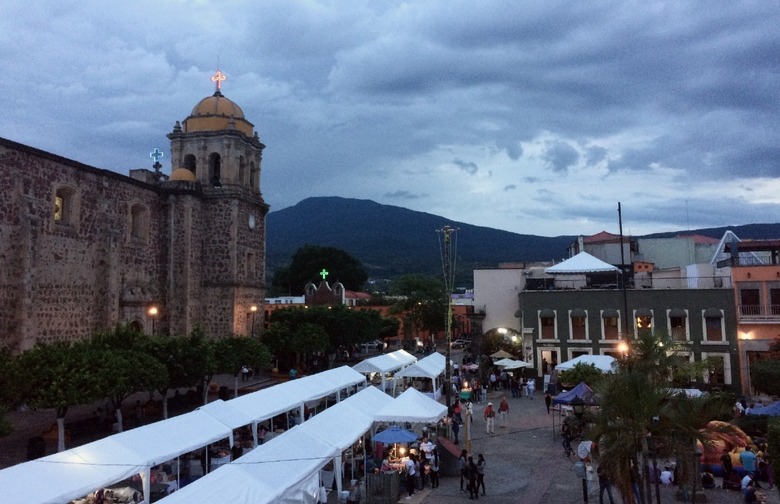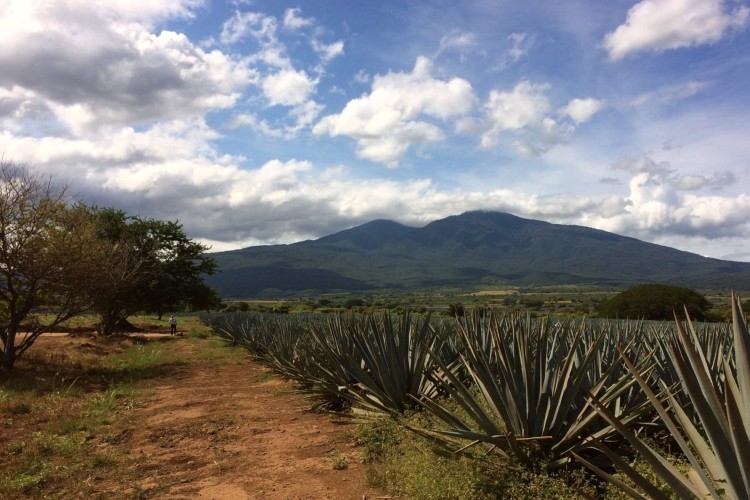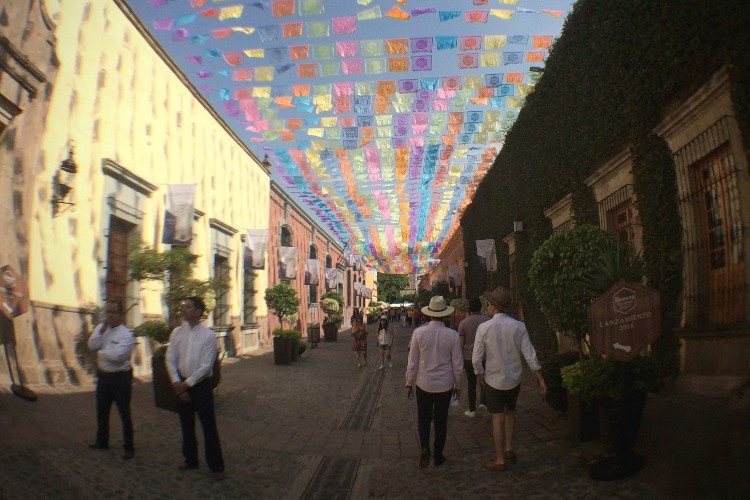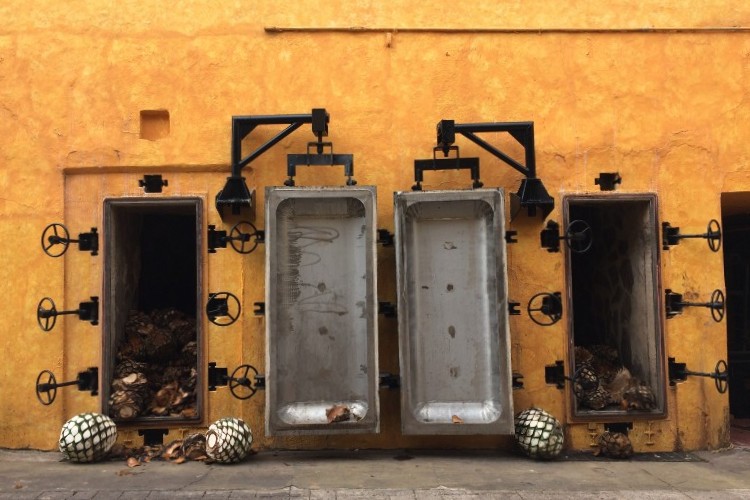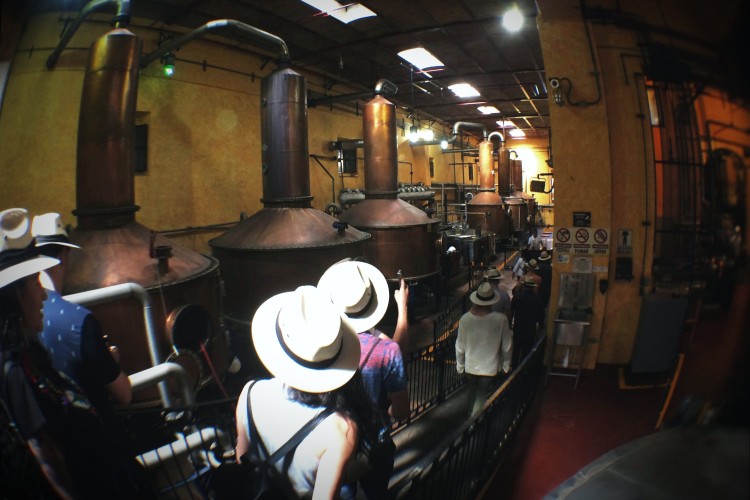Tequila Is An Actual Town In Mexico, And It's Officially Magical
Quite a few foods and drinks are named for places, but the relationship can often grow faint. When you're crushing tiny hamburgers at White Castle, you probably don't spare a thought for Germany's busiest port; when you're sprinkling Parmesan on a slice from your favorite pizzeria, you're unlikely to contemplate the small city of Parma in northern Italy; and when you're pouring sriracha on practically everything, you're probably not thinking of a small town on the Bay of Bangkok. But the next time you find yourself agreeing to just ooooooone more shot of Jose Cuervo at the end of the night, it might be worth letting your mind drift toward a place called Tequila.
11 Things You Didn't Know About Cholula Hot Sauce
Tequila is a municipality of around 27,000 people about an hour's drive from Guadalajara, Mexico's second largest city and the capital of the state of Jalisco. The picturesque town is one of around 100 places designated Pueblos Magicos ("Magical Towns") by the Mexican government; the countryside around Tequila is dominated by maize farms and a 3,000-meter dormant volcano — and by agave plantations that stretch in every direction.
Those agave fields help explain why the little town's name is now known everywhere from Toronto to Tokyo. Agave is a large, long-lived succulent native to Mexico, many species of which grow in various parts of the country. Pre-Columbian Mesoamericans used parts of the plant for textiles, tools and food — including a ceremonial alcoholic drink brewed from fermented agave sap called pulque. Sometime after the brutal conquest by Spain, Mexicans began refining fermented agave into a spirit called mezcal, named from the Nahuatl words for "cooked agave."
One notable area of mezcal production was around the town of Tequila, where the volcanic soil proved fertile ground for growing agave. Major distillers there were pioneers in bottling and exporting agave spirits in the late 1800s, such that when mezcal de Tequila started to gain popularity in other countries, the name of the town often served as shorthand for the spirit. Mexican government regulations passed in 1949 officially established tequila as a product distinct from mezcal, mandating that it be produced within a limited region and only from a specific species of plant, the Weber blue agave.
As one might expect, tequila the drink has long been a big business in Tequila the place, and a few recognizable names stand out in the town's history. Jose Cuervo (yes, he was a real person, and there have actual been several of that name in the family line) received the first royal license from the Spanish crown to distill mezcal in 1795, and Cenobio Sauza, a former Cuervo employee, acquired his own distillery in 1873 and played a major role in spreading the spirit to the rest of the world.
Other distillers like Orendain and Fortaleza also dot the town's map, but Cuervo's La Rojeña distillery, established in 1812, stands out on Tequila's main square; crowds convene daily to tour the distillery, the palatial grounds, and the storerooms of barrels filled with slowly aging tequila. Jose Cuervo — still family-owned, 11 generations after the original Jose — is the world's most famous and largest producer of tequila by a wide margin, but at La Rojeña the brand prefers to emphasize its most refined and traditional aspects; visitors can taste samples at various stages of maturation and see the cellar where the company's high-end Reserva de la Familia extra añejo is aged.
Tours of the agave fields surrounding the town and at the base of the volcano are also offered by some distilleries as well as by independent guides; on some excursions, tourists can view a live demonstration led by a jimador, or agave harvester, of the tools and techniques used to harvest the piña, the heavy round core of the spiky agave plant.
All this emphasis on agriculture and craftsmanship doesn't mean you can't get lit in Tequila. Tourism is an increasingly significant part of the town's economy, and visitors can take a boozy joyride aboard vehicles in a number of novelty shapes — jugs, bottles, barrels — or buy a variety of tequilas and souvenirs from street vendors or tiendas along the main square or in the plaza in front of the charming church, atop which neon crosses glow once the sun goes down.
And anyone looking for more local color can seek out the legendary cantina La Capilla a few cobblestone blocks from the main square. Here a guest can sit at a cheap plastic table and enjoy a refreshing paloma or perhaps a batanga — the La Capilla original is a mixture of tequila, lime, Coca-Cola and salt, stirred with a mean-looking knife by a friendly-looking bartender.
The informal charm of the town belies its cultural influence. Mezcal producers from Tequila helped establish the predominant international standard for agave spirits, with a significant impact on how Mexican culture is viewed worldwide. Of course, excellent examples of mezcal are produced throughout Mexico, and curious drinkers are inevitably drawn to explore tequila's sibling rivals — but even aside from the "Pueblo Magico" label, there is something genuinely magical about a small town whose signature product managed to spread its name to every corner of the globe.
Travel expenses for a visit to Tequila, Jalisco, were provided by Jose Cuervo at no cost to the writer.
